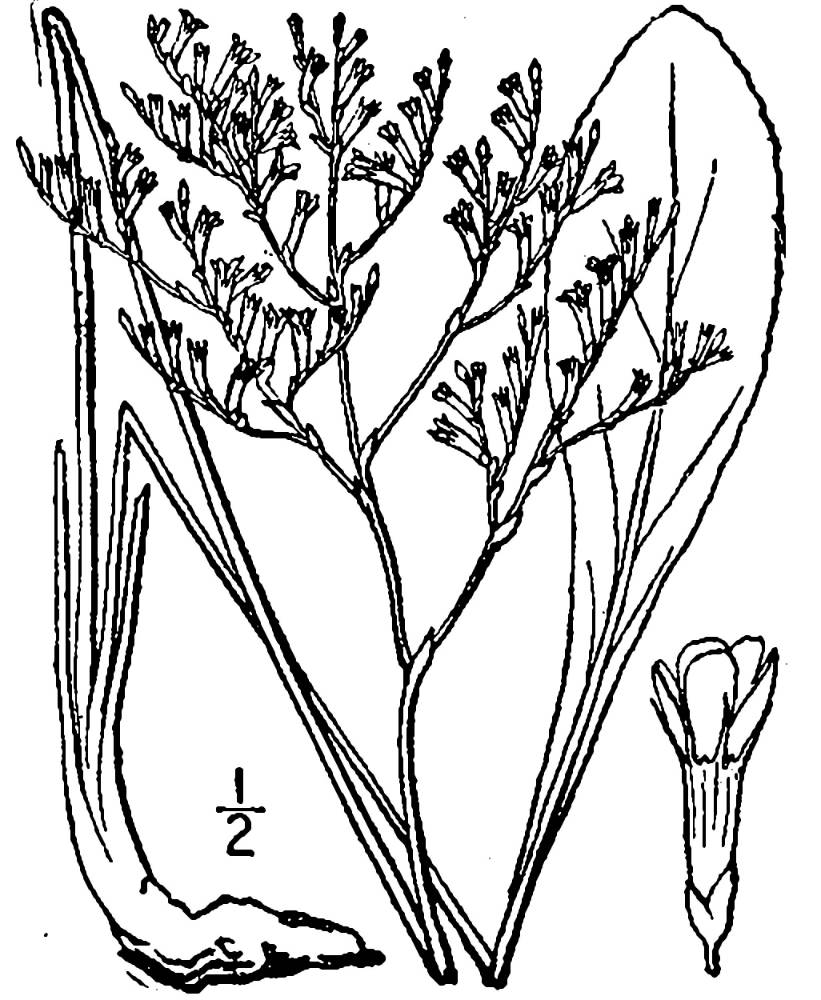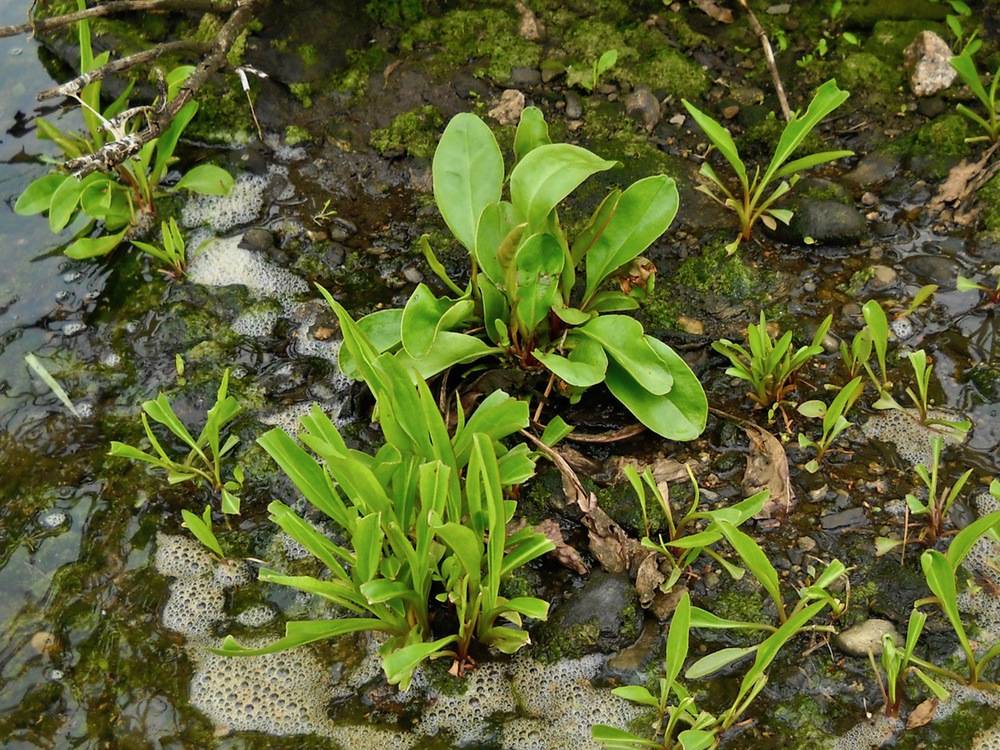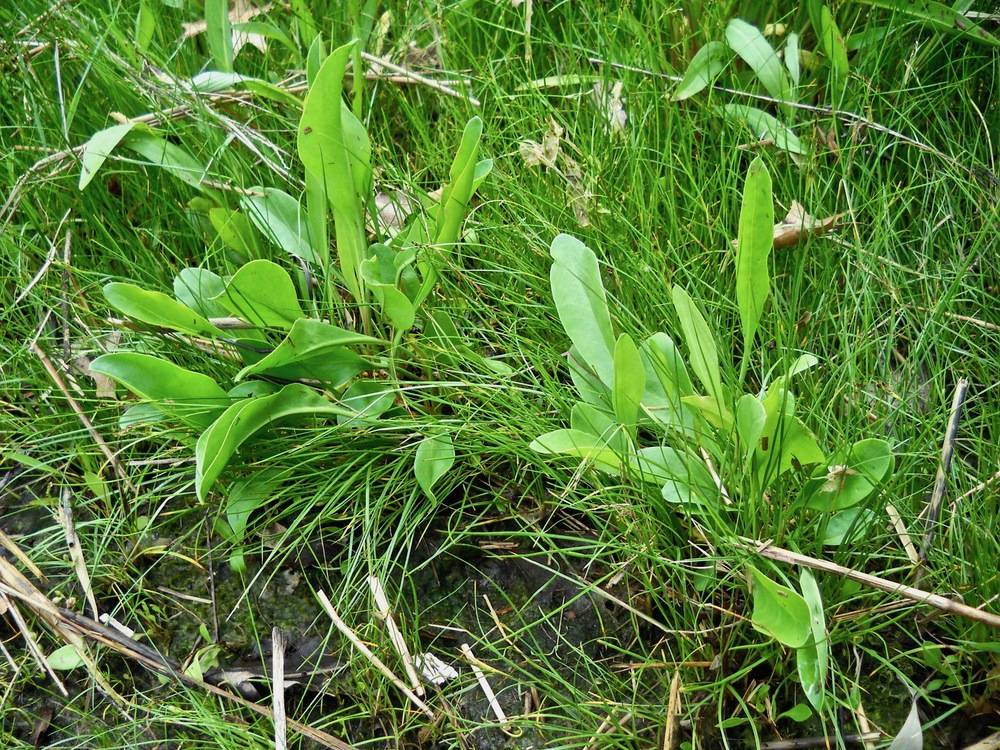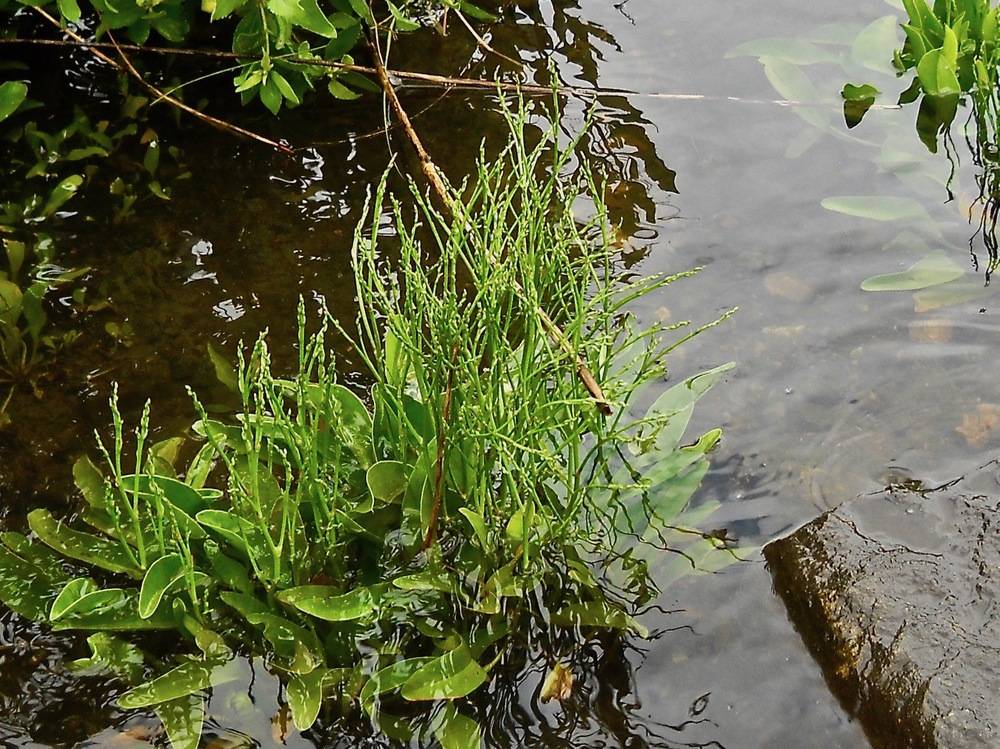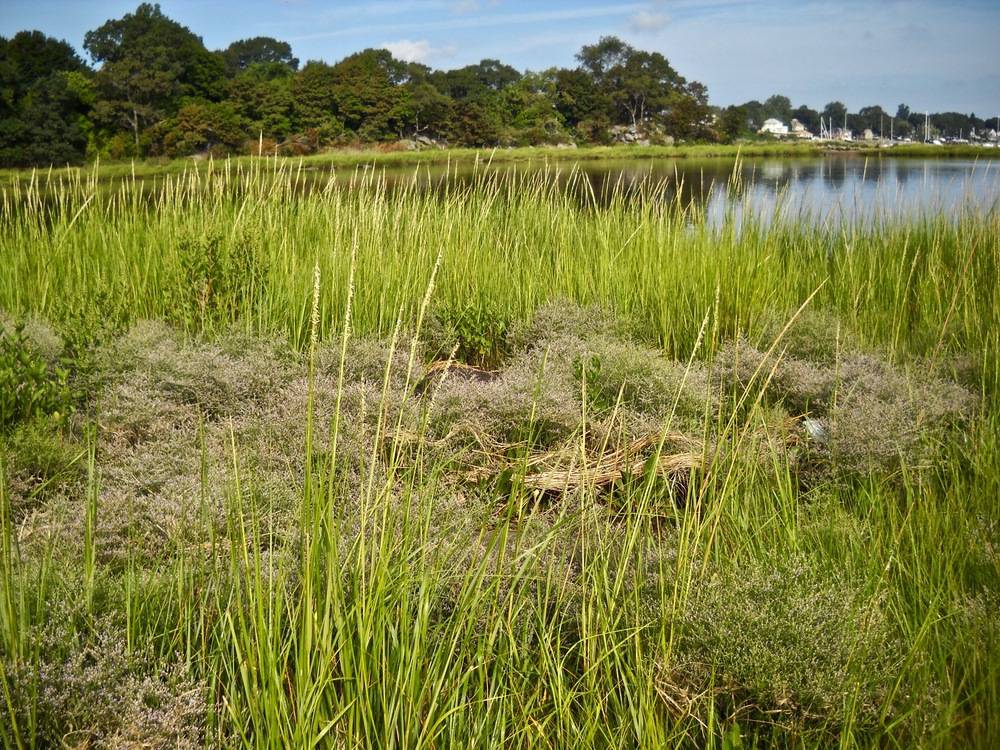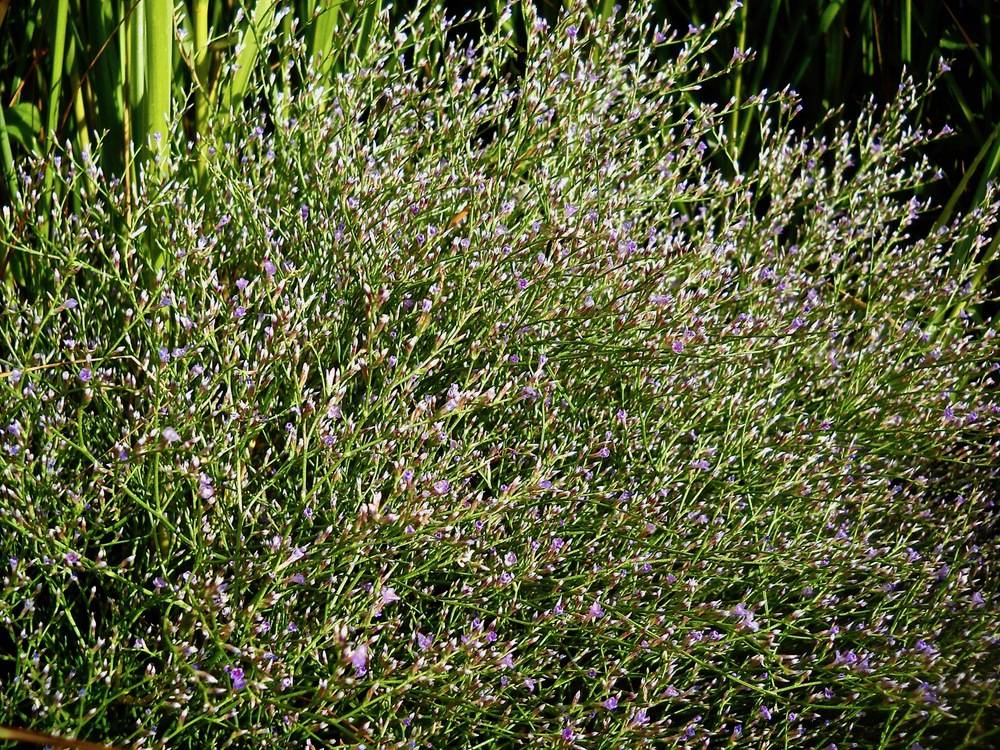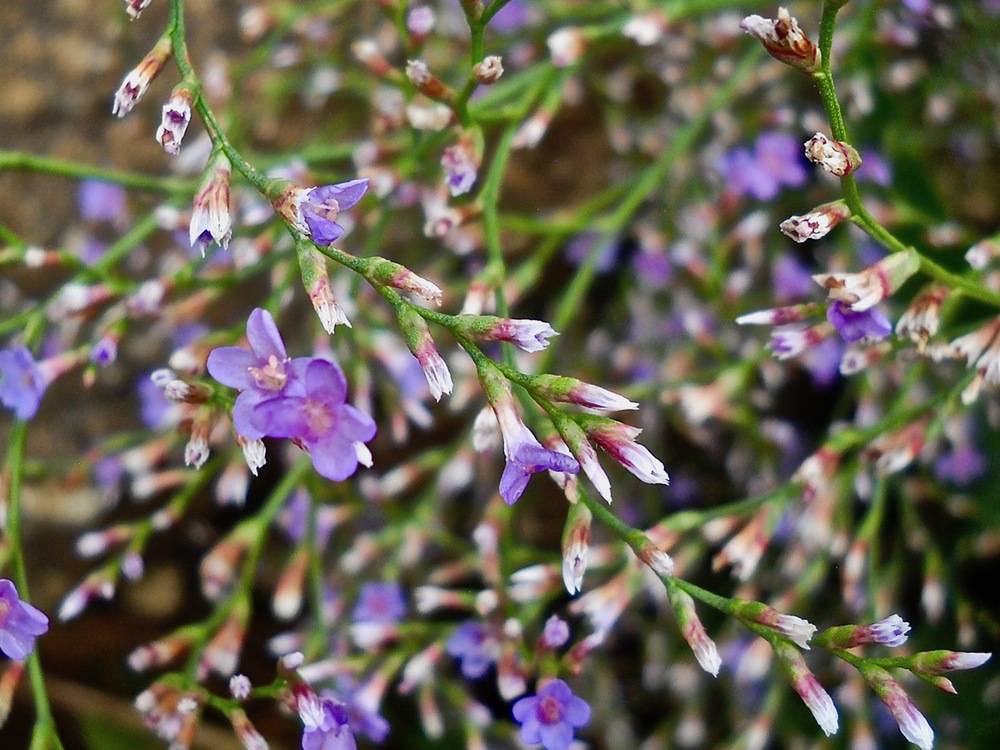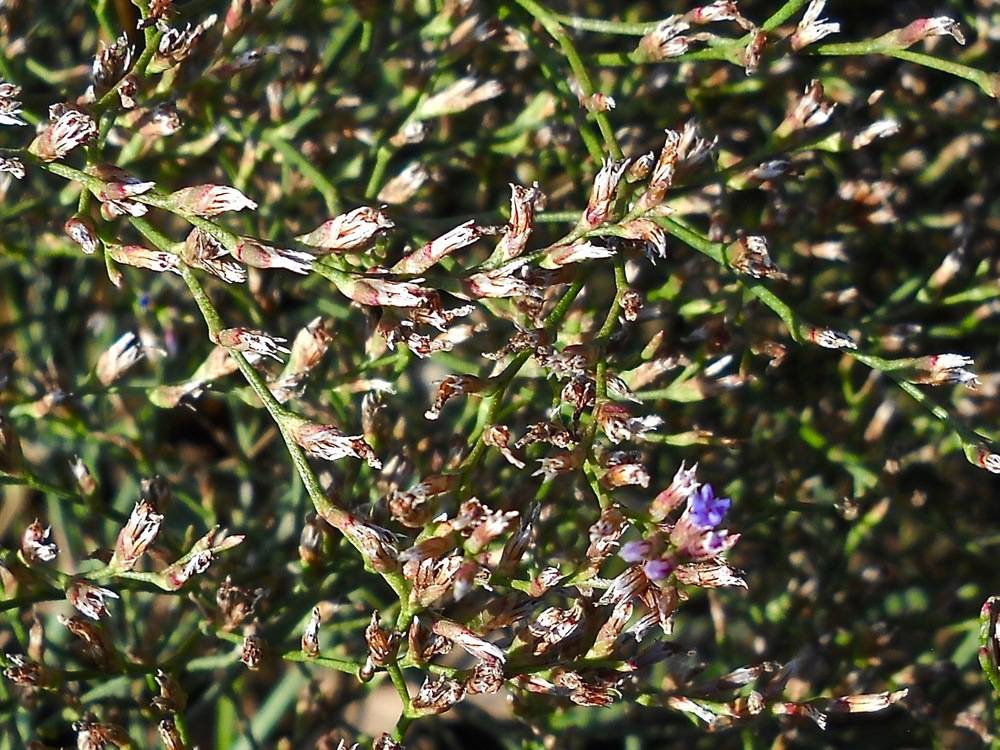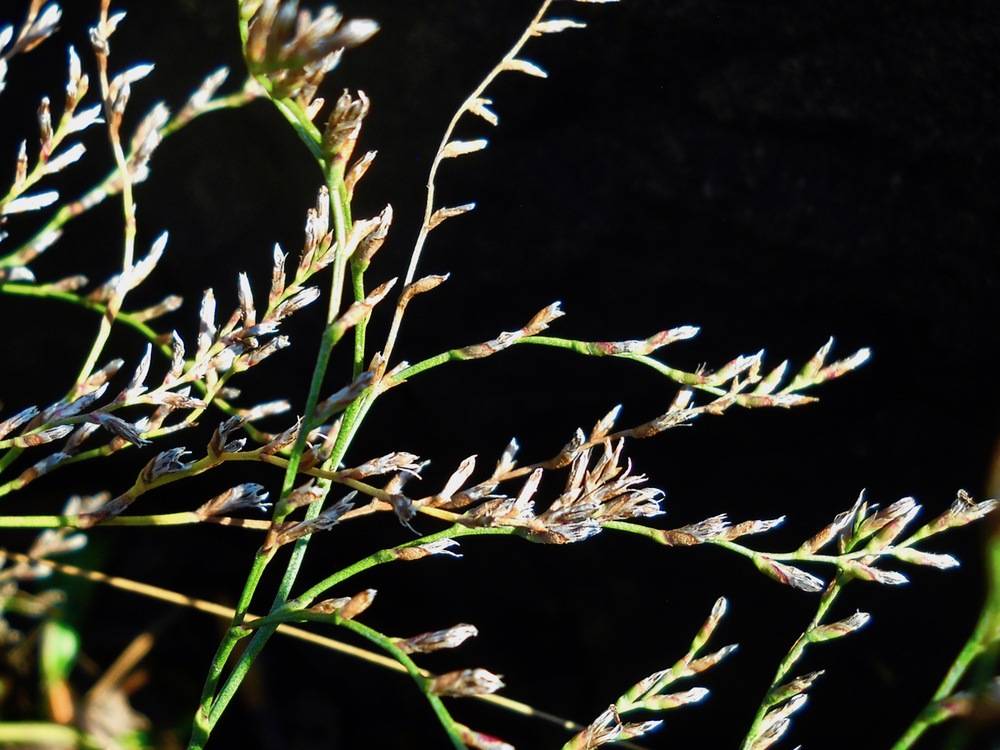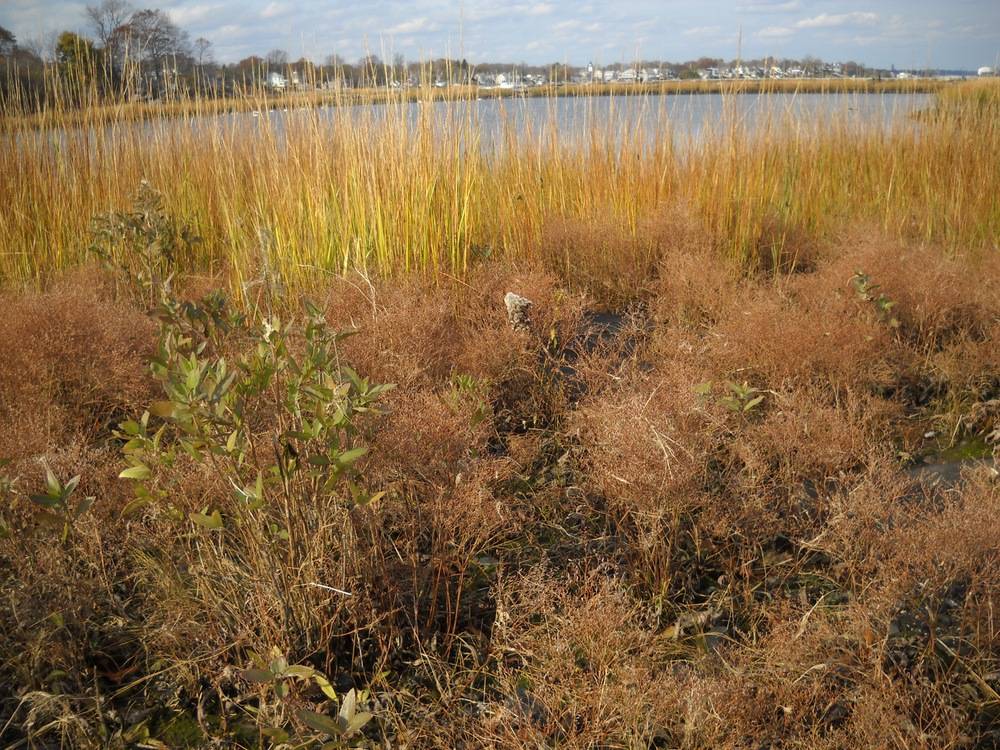Carolina sea lavender
The Carolina sea-lavender is a slow growing, salt-tolerant perennial forb native to the coastal habitats of eastern North America. It can be found growing in the intertidal or shallow subtidal zone of salt marshes, either mixed in with other marsh vegetation or in pure stands where conditions are favorable.
At Salter Grove, small clumps grow along the Marsh Trail and the causeway. A very extensive patch can be found along the Rock Island Trail near trail marker R4.
The plants are particularly conspicuous during early August through October when sprays of flowers rise above the succulent spoon-shaped leaves. The pale purple flowers are attached along just one side of the branch resulting in large but airy bouquets. Despite each plant having the capacity to produce 1000 to 10,000 seeds, Carolina sea lavender primarily increases vegetatively.
Native Americans along the north Atlantic coast added ground roots to boiling water to treat hemorrhages arising from tuberculosis. Before medications were widely available at the corner drugstore, a decoction of the astringent roots was a popular home remedy for diarrhea, dysentery, mouth sores and cankers. The dried and powdered root was applied directly to alleviate old ulcers or piles.
For more information:
http://www.edc.uri.edu/restoration/html/gallery/plants/lavender.htm
https://plants.ces.ncsu.edu/plants/limonium-carolinianum/
https://esmed.org/MRA/IBR/article/view/438
https://plants.sc.egov.usda.gov/core/profile?symbol=LICA17
http://naeb.brit.org/uses/search/?string=Limonium+carolinianum

